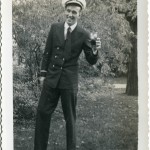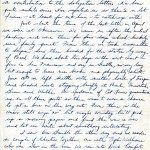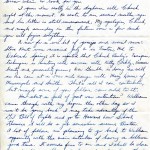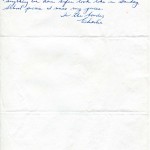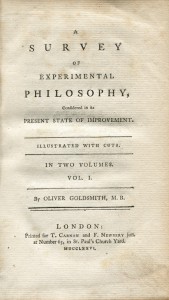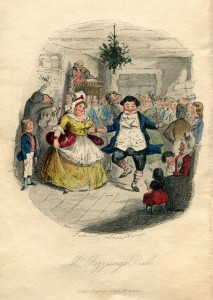Happy Day of Digital Archives! My Musings
Today is the Day of Digital Archives!
The Intersections of Oral Traditions and Digital Archives. (Happy Day of Digital Archives, Oct 12 2012)
Older ways of representing information, especially in the everyday library setting, are often rule-based, linear, and resistant to change. Digital repositories/ digital archives, in contrast, provide alternatives to linear, monolithic descriptions for sharing knowledge.
Digital repositories, with their array of metadata schemas are elusive like the spoken word. While the backend of repositories, like the structure of language, preserves and exports in a standardized form (usually METS XML), digital collections similar to oral cultures are mediated and exhibited in a wide variety of ways. Although direction is maintained, both traditions allow for multiple visits, varied connections, and a lot of variation within limits.
Perhaps the digital archive, as a repository, is the culmination of archival theory itself: collections connected in an interoperable and emergent manner. Digital archives, as archival theory has long promoted itself as the vestibule of different kinds of exchanges, scholarship, and uses. The material is free from the linear and isolating confines of the academy; instead the material is presented in a distributed and interrelated manner. JD
In my social circle, there are those who lament the ubiquitous presence of popular culture, the lack of physicality in the electronic book, and the missing discipline and linear hierarchy offered by Wikipedia. My information-professional colleagues offer discipline-specific, but similar protests: a fear of new metadata schemas, which disrupt centralized cataloging and dismay over the potential lack of unity with digital collections.
I offer a different hypothesis, as a former student of anthropology who often reflects on the cultural aspects of digital archives development, Walter J. Ong’s research is informative. He notes that oral cyclic thought is characteristic of primary oral cultures, whereas linear thought depends on writing. Although unreasonable to some, I posit that humans’ oldest form of communication and one of the newest forms of technologies are fundamentally the same. Oral tradition and digital object description share the following:
- Navigating through networks or collections, which are not fixed entities and exist more as a “knowledge constellation.”
- Time and text are not linear. Both oral tradition and digital archives are participatory.
- Digital archives and oral traditions seem to parallel the way we think and seek knowledge.
In the information discipline, specifically libraries, we still rely on a linear fixed bibliographic record (MARC and a small step forward with RDA) and are only beginning to experiment with the potential of the multiple fluencies of digital repositories. This type of cataloging lacks the ability to reflect how current information users search for knowledge. MARC, although “machine-readable,” is an extension of the card catalog and is simultaneously an ill-fitted way to describe digital collections. RDA, in contrast, is preparation for linked data approach for cataloging. Unfortunately, RDA still relies on legacy standards designed for the card catalog world, such as creating uniform titles for grouping items, highly structured format descriptions, and emphasis on textual “citation-like” notes fields. Legacy practices (the afore mentioned) ignore the reality of the digital world, where identity is rarely expressed in a static or textual manner. Using persistent identifiers as part of the metadata like Uniform Resource Identifiers (URI) works much better.
Information users seek and use different non-linear ways of access, such as, multiple exchanges, translations, links, multiple objects, and commentary. Patrons of digital technologies are fluent in various means of “information languages” and their research needs are similar. For example, they do not necessarily need to be forced to search in a monolithic system.
The range of metadata schemas like VRA Core, MODS, Darwin Core, etcetera, with a standardized data schema on the backend, represent a shared identity of an object. The identity is less about the object itself; instead, the importance lies in the relationships between objects. Arguably, this is they way humans naturally think and search, which stands in sharp contrast to the highly structured nature of linear descriptions. Indeed, more aligned with textual dominance, older static schemas and descriptions are not ideal for digital collection building and do not reflect the way we think, lacking different kinds of uses and scholarship opportunities.
Digital archives/ repositories provide direct access to the primary object, as part of an interrelated “knowledge constellation.” This results in immediate use in classrooms, Web sites, museum exhibitions, blog posts, and e-publications. One might argue that this form of of-the-moment access lacks the central authority and is untraditional. Although true, this criticism only reveals a partial picture. Similar to griots or other keepers of oral histories, the stories or digital objects in a digital repository are accessed and passed along in different forms. In other words, they are repurposed as bounded aggregations of a whole and they are shared. By forging semantic links in repositories, it keeps those links active and dynamic, allowing for new scholarship and forging new connections. Recently, digital archivists and other information professionals have been discussing the social graph, which shows social relationships on the web based on Facebook and Twitter. The linked data element of an institutional repository might produce a similar graph. Interestingly, what these graphs and the constellation of data behind them dynamically demonstrate is not so different from our human ancestors’ shared stories and their networks of knowledge. – JGD

